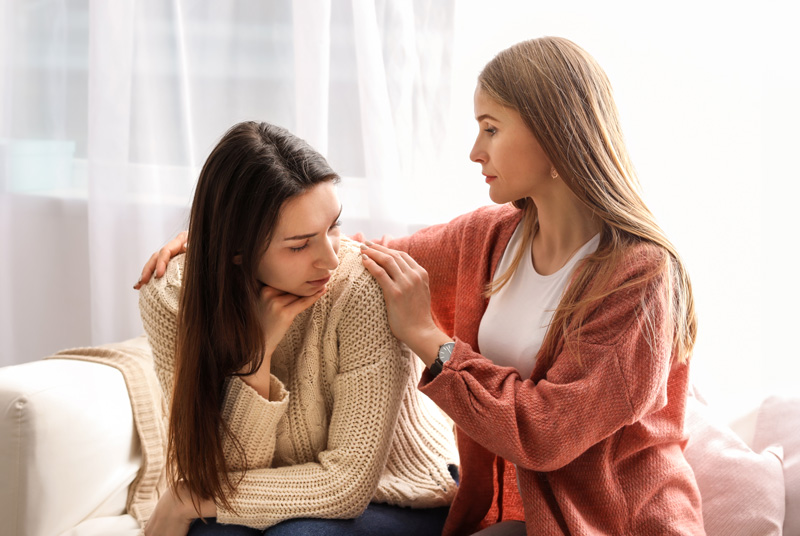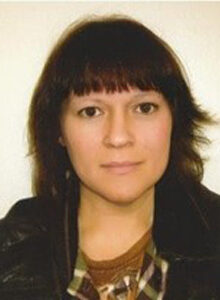“I was delighted to get my first consultant job working in an in-patient [psychiatric] unit… In my second week, I had my first patient die by suicide. In my third week, I had my second patient die by suicide. In my third month, there was a very distressing…death by suicide on the ward…[P]art of me died. How could I have had three deaths like this? It must have something to do with me” (Gibbons, 2023).

My reaction to the above statement is that no health professional is omniscient. Violence against self or others is a concern with which all human services providers are familiar, whether serving the psychiatric population or people with developmental disabilities, and exceptions to “doctor-patient” confidentiality agreements underscore those situations. Helping professionals ask their clients about suicidal thoughts and actions, but some cling to the omnipotent belief that they have special powers of insight into others’ minds and the ability to predict what someone will do in the future.
Unfortunately, there is also widespread anxiety in Western society that frank discussions of self-harm and death both encourage suicidal thoughts and behaviors and normalize them.
Suicide Statistics
According to the Centers for Disease Control and Prevention, “more than 48,000 people died by suicide in 2021. That is 1 death every 11 minutes. 12.3 million adults seriously thought about suicide” (Suicide Data and Statistics | Suicide Prevention | CDC).
In the developmental disabilities sector, which includes autism, the stigma of odd behavior is exacerbated by decreased awareness and understanding of what makes people tick. People with major mental illnesses are at greater risk of self-harm or suicide than the general public, and autistic people are at a higher risk of suicide than those with mental illness. Rigid thinking, difficulty adapting to change, social isolation and loneliness, lack of coping strategies, and oversensitivity to stimuli all increase the risk of suicide in autism (Shtayermman and Fletcher). “Combining data across studies, prevalence of suicide attempts in ASD was estimated to be 7 to 47%, and suicidal ideation was 72%” (Hedley and Uljarević, 2024).
In her article, 6 Reasons Autistic People Are at Greater Risk of Suicide, Claire Jack references research suggesting that over 50 percent of people who had attempted suicide scored above the cut-off point for likely autism as measured on the Autism Spectrum Quotient (Jack, 2023)
Undiagnosed ASD and Suicide Risk – More and more adults – many of them women – are seeking autism assessments, suspecting they fell through the cracks in the system during childhood. Some have long histories in the mental health system, with long lists of difficulties such as problems with employment, relationships, and mental health issues, including suicidality.
Personally Affected – This author was officially diagnosed with Autism and ADHD in 2021. I initially entered the mental health system in first grade, re-entering it in my early 20s after achieving an MA in clinical psychology. I was confused, depressed, and angry that, despite a large volume of theoretical knowledge of human behavior, I was unable to apply any of it in a clinical setting. Due to undiagnosed sensorimotor impairments, I couldn’t even keep jobs in retail sales or fast food restaurants.
I self-injured numerous times. My depression reached the point where I begged one psychiatrist for a lobotomy. I felt entirely alone, wretched, and unvalidated – in part because my doctors agreed that none of my many diagnoses was a “textbook case” of any particular mental disorder.
I was asked frequently about thoughts of self-harm and suicidal gestures. I answered honestly but superficially. For me, thoughts and acts of self-harm were impulsive and transitory.
Impact On Professionals
General practitioners, psychiatrists and psychologists, social workers, occupational therapists, disability support workers, and more all work with autistic people. In Canada, much of the available support is community-based, with funding often allocated for families to hire an independent or agency-based worker. Many of these service providers are Developmental or Disability Support Workers (DSWs) (Spruyt, 2021).
COVID-19 spotlighted an urgent demand for DSWs to assist individuals with diverse abilities, spurring investment by the Ontario government into its Care at Home mandate and creating new care-services opportunities.
DSWs complete a program such as social work, child and youth care, psychology, or other social science/health care courses at a college or university. It is, as yet, an unregulated profession; however, their role is to support individuals with developmental disabilities, including autism, to participate fully in their communities. They’re also responsible for implementing behavior management strategies to reduce challenging behaviors (Spruyt, 2021).
The Ontario government asserts a commitment to patient care in the community, and DSWs often work in Group Homes or their clients’ homes, where they’re left to their own devices to manage their client’s behavior. Aggression and outright violence are serious problems among self-conscious, frustrated young adult Autistics.
A DSW’s Experience – “Ellie” is a DSW who works for my family. She told me that there’s little to no support for workers like her. “You’re on your own,” she explained, to cope with the violence, anxiety, and daily uncertainty about what the day might bring. Ellie has been hit, kicked, punched, and concussed by her early-20s male client, who is far taller and stronger than she is.
Ellie acknowledges the hazards of her job. She knows she could walk away – and perhaps should – but then, “who would the family find to care for him?” She knows his triggers and tries to protect herself by anticipating potential trouble.
I’m one of the few with whom Ellie shares her experiences and feelings. Many professionals, trained to maintain an outward demeanor of strength, are reluctant to open up about their distress and vulnerability. Client-on-therapist violence may result in the client being denied important services – and/or they may find themselves entangled in the justice system.
But if a client, feeling like they have nothing to live for, dies by suicide, their provider (or caregiver) may feel they failed. “Why didn’t I see it coming? I could have prevented it.” For people whose responsibility is to make sure the person within their care is safe and healthy, the trauma is gut-wrenching.
Empathic Listening by Peers
Talking to an empathic listener is the hallmark of most therapies. After experiencing trauma, it’s vital that “Helpers” give themselves permission to talk openly about self-harm, suicide, and, more generally, death. Many organizations employing board-certified MDs, PhDs, MAs, and others with related qualifications provide opportunities to debrief and/or to seek counseling through a confidential Employee Assistance Program.
AIDS Bereavement and Resiliency Program – There are a number of structured programs designed to target workplace trauma. Having worked at an AIDS/HIV organization at a time when many clients were dying, I received training from the AIDS Bereavement and Resiliency Program of Ontario (ABRPO). The program provides AIDS/HIV workers – administrators, front-line workers, volunteers, and peer workers – customized training to support them through the loss of clients, as well as training them to work with service users who experience loss (“Essential Tools for Support and Stability – ABRPO,” 2021).
ABRPO’s key skills include identifying the emotions impacting workers and practicing Emotional First Aid. Among the facilitated communication skills is the willingness to risk expressing one’s feelings of anger, fear, and sorrow to peers who have endured similar traumas.
Battle Buddies – The US Army Battle Buddies Support Program was adapted for healthcare facilities during the COVID-19 pandemic. Designed to support workers experiencing anxiety and stress under the “battlefield conditions” of the pandemic, Battle Buddies are partners who understand daily workplace challenges, provide each other with additional/alternative perspectives, support resilience, and, if stresses and anxieties increase, encourage their Buddy to reach out for more in-depth help (Albott et al., 2020).
Uniting for Suicide Postvention – The US Department of Veterans Affairs provides similar programs. Uniting for Suicide Postvention is a resource for providers who have been affected by the suicide loss of a patient. It acknowledges the difficulty of processing loss while maintaining one’s professional duties. Recognizing the impact of loss is a vital step towards healing, at work and in one’s own life (“Uniting for Suicide Postvention – Providers – MIRECC / CoE”).
New Challenges
Western culture has long kept death relegated to hospitals, long-term care, and funeral homes. “Our reluctance to honestly examine the experience of…dying has increased the harm we inflict on people…[I]f we are unwilling to recognize that…people have unbearable suffering that we can do nothing about…they need…an option where they can relieve that suffering” (Duff, 2016).
Given changes to Medical Assistance in Dying (MAID) law, we’re beginning to acknowledge that people with Autism may be in “their right minds” and capable of deciding whether or not they want to continue living. It’s more important than ever to have conversations about life, death, and dying – not only in peer groups but with clients and their families.1
Conclusion
You may always be left asking why the person chose death. Therefore, it’s vital to “[h]onor all of your feelings and take…time to grieve, process, and integrate this loss…It is important to do the grief work that we encourage our own clients to do. This is done not only for your own health but also for your future and present clients’ best care” (Hutchinson, 2021).
Annie Kent, MA, spent two decades working in public sector disability, mental health, and infectious diseases advocacy and education. Diagnosed with three closely related types of neurodiversity, a lack of awareness and understanding led to burnout and retirement from the field. She remains an active advocate, learning and engaging remotely with several Autism and ADHD organizations and Forums. For more information, visit her website, www.aspiefemmepress.ca, or email Annie at ajollymo@lakeheadu.ca.
Footnotes
1. In March 2024, a Calgary, Alberta, [Canada] judge issued a ruling that cleared the way for a 27-year-old Autistic woman (not officially diagnosed) to receive medical assistance in dying (MAID) despite her father’s attempts through the courts to prevent that from happening. https://www.cbc.ca/news/canada/calgary/calgary-maid-father-daughter-court-injunction-judicial-review-decision-1.7154794
References
Albott, C. S., Wozniak, J. R., McGlinch, B. P., Wall, M. H., Gold, B. S., & Vinogradov, S. (2020). Battle Buddies: Rapid Deployment of a Psychological Resilience Intervention for Health Care Workers During the Coronavirus Disease 2019 Pandemic. Anesthesia and Analgesia. https://doi.org/10.1213/ANE.0000000000004912
Duff, N. J. (2016). Being Mortal: Medicine and What Matters in the End by Atul Gawande. Theology Today. https://doi.org/10.1177/0040573616629364a
“Essential Tools for Support and Stability – ABRPO.” ABRPO – AIDS Bereavement and Resiliency Program of Ontario, https://www.facebook.com/abrpoinfo/, 26 Apr. 2021, https://abrpo.org/resources/essential-tools-for-support-and-stabiliity/.
Gibbons, Rachel. “Eight ‘Truths’ About Suicide.” Cambridge University Press, BJPsych Bulletin, 14 Sept. 2023, https://www.cambridge.org/core/journals/bjpsych-bulletin/article/eight-truths-about-suicide/36D1872261E290945E245143BECC6260.
Hedley, D., Uljarević, M. Systematic Review of Suicide in Autism Spectrum Disorder: Current Trends and Implications. Curr Dev Disord Rep 5, 65–76 (2018). https://doi.org/10.1007/s40474-018-0133-6.
Hutchinson, Lisa. “How to Grieve a Client’s Death Ethically – A Counselor’s Guide.” Counseling Schools, Counseling Schools.com, 22 Apr. 2021, https://www.counselingschools.com/blog/how-to-grieve-the-death-of-a-client.
Jack, Claire. “6 Reasons Autistic People Are at Greater Risk of Suicide | Psychology Today.” Psychology Today, Psychology Today, 17 Feb. 2023, https://www.psychologytoday.com/us/blog/women-with-autism-spectrum-disorder/202302/6-reasons-autistic-people-are-at-greater-risk-of.
“Suicide Data and Statistics | Suicide Prevention | CDC.” Suicide Prevention, https://www.cdc.gov/suicide/facts/data.html. Accessed 29 May 2024.
Shtayermman, Oren, and Jason Fletcher. “Predictors of Suicide Attempts of Individuals with Autism and Their Siblings.” Europa PMC, Nursing Research and Practice, 2 Sept. 2022, https://europepmc.org/article/MED/36089923.





